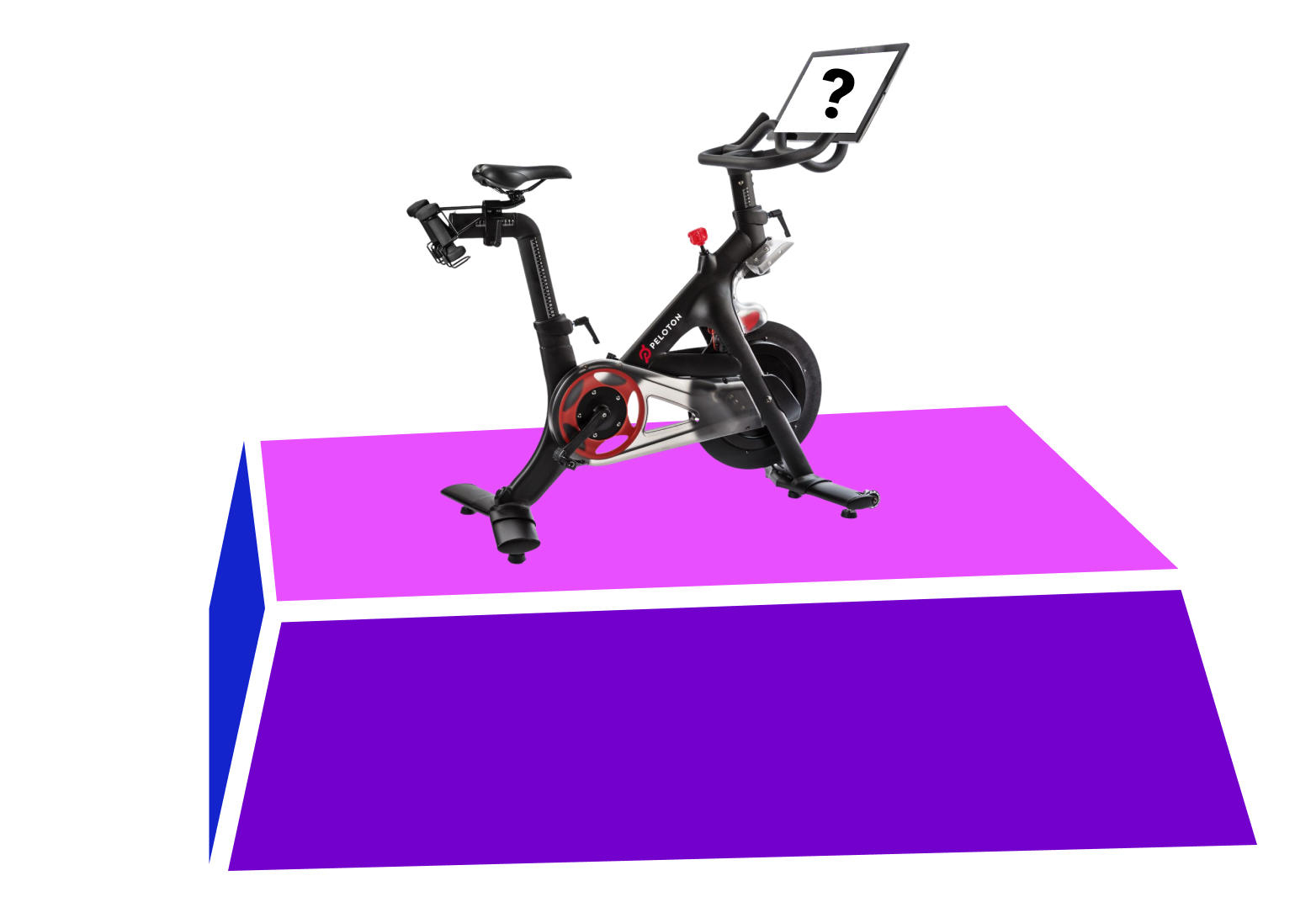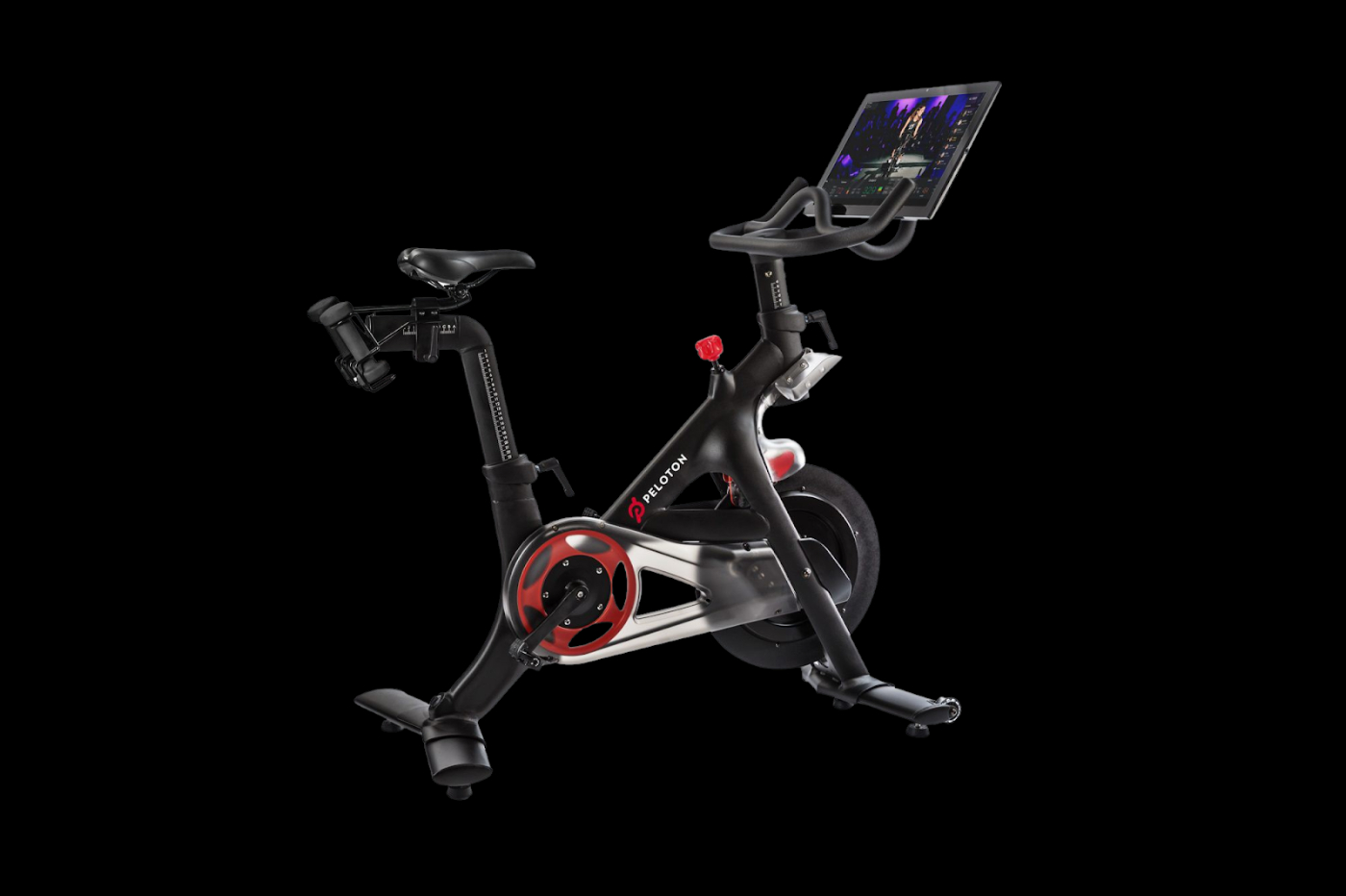
Peloton has had a terrible 12 months:
- Growth stalled as gyms re-opened
- Their stock price lost 78% of its value
- They massively over-invested in production capacity
- Their new treadmill product—which they hope can become a 3x larger business than the bike—got recalled
- Their old cycling product gave multiple (yes, multiple!) TV characters heart attacks
- They had to lay off 20% of their workforce
- Their founder and CEO stepped down
Phew!
While most analysts are busy arguing over just how screwed Peloton is, nobody seems to be picking up on the signals that the company’s new CEO, Barry McCarthy, has been sending in interviews. His statements imply a strategy shift for Peloton that is fascinating: switching emphasis from hardware sales to subscriptions, and from product to ecosystem.
Whether or not you believe Peloton is a good investment right now—I’m personally 50/50—it’s fascinating to imagine what the company might become in the Barry McCarthy era. So today’s essay is simple: articulate the opportunity Peloton seems to be going after.
Here it is in a nutshell:
- Demand for Peloton-flavored fitness content is large—but anything that specific can only appeal to so many people for so long.
- There is a much larger and more durable opportunity to become a platform for many content providers across many exercise modalities.
- If they pull it off, Peloton can occupy a position in fitness similar to the position Apple occupies in computing: connecting developers with users through premium hardware and core OS functionality.
Ok, let’s get rolling!
Where Peloton Fits Today
There are, broadly speaking, two layers that comprise the fitness industry:
- Paradigms (I’ll explain what this means)
- Equipment
Paradigms are systems of belief that tell you what to do and why. There are a wide variety of them in fitness, ranging from CrossFit to Jazzercise. Each has a story about how things work, and what results you can expect if you perform specific actions in a specific way. They are essentially strategies; theories of cause and effect. But they’re also more than that. Communities form around paradigms, providing motivation through competition and camaraderie, and sometimes the benefits of being a part of a community of believers can be even more important than the value you get from the veracity of the belief itself.
I am kind of obsessed with paradigms, and think they explain much of human behavior beyond fitness. I wrote about them a few months ago in the context of memes, and a few years ago in the context of science.
For the purposes of analyzing Peloton most people talk about “content” or “community” but I think those words don’t fully capture everything that’s going on. Both the content and the community are manifestations of a more fundamental thing, the paradigm.
Equipment, on the other hand, is much simpler. It’s the stuff you use to follow the paradigm. Most equipment is paradigm-agnostic, the same way most computers let you run any sort of program. But sometimes custom equipment is created for a specific paradigm, and it lives or dies based on demand for the paradigm. Two examples of this are Bowflex and Shake Weights.
Peloton’s business encompasses both layers: they sell equipment like bikes and treadmills for a flat fee, and they sell paradigms (content and community) for a monthly subscription.
Each of the two businesses has unique strengths and weaknesses.
Fitness equipment tends to be relatively more stable than paradigms—benefiting from the Lindy effect—but is rarely as profitable. This is for a couple reasons. First is simply that paradigms are scalable and have few variable costs, while manufacturing and shipping physical equipment is expensive. Second, since fitness equipment is mostly standardized, most equipment makers struggle to compete on anything other than price. There are some premium equipment makers that are able to establish meaningful brand differentiation (Rogue being a prime example) but still I would bet their margins are lower than companies that own a paradigm.
Paradigms aren’t perfect though. They are often unstable and faddish. How confident are you really that popular paradigms of today like spinning or Barry’s will still be dominant in 20 years? There is a long history of fads that have come and gone: Jazzercise, Barre, P90X, Tae Bo, 8-minute abs, Bowflex, etc. Just because a paradigm seems cool to you now doesn’t mean your kids will think it’s cool. That being said, when a paradigm is growing it can still be a great business to be in, for reasons I elaborate on in Why Content is King: there are network effects, switching costs, economies of scale, and really all forms of power (as defined by Hamilton Helmer) to some degree or another.
The only reason paradigms are so often short-lived is because of a quirk of fitness as a category: the most popular ones by definition appeal to people who previously were not in the habit of exercising, and because exercise is inherently hard, most people won’t stick with any paradigm no matter how appealing it feels at first. The more intense paradigms like ultra-marathoning or bodybuilding tend to enjoy more stability, but attract fewer adherents because they don’t appeal to casual newcomers as much.
This leads us to Peloton’s greatest strength, which is simultaneously its biggest looming threat: right now they are able to sell hardware for a non-commodity price and have a fantastic subscription business because they’ve bundled their equipment with a differentiated paradigm that lots of people love. It sure doesn’t feel like a fad right now. But what if their core ‘spinning’ paradigm loses appeal? What if it starts to get old, and our kids think of it the way we think of Richard Simmons’s VHS tapes?
Given the cultural backlash they have already received, it’s possible that a vibe shift in wellness (or, perhaps, paradigm shift?) could hurt Peloton sooner than they had ever imagined.
Peloton’s Platform Opportunity
Of course, this is why Peloton is expanding beyond the bike. They already released a treadmill, have a lightweight strength product called ‘Guide’ in the works, and are rumored to be releasing a rowing machine and a more full-featured strength training system. They also have expanded their content library to include a wide selection of non-spinning exercise paradigms—everything from Barry’s bootcamp-style classes to walking, stretching, meditation, and even sleep.
But ask yourself: do you think Barry’s fanatics want Peloton’s version of a Barry’s class? Or do they want the real thing? And if they want the real thing in that category, then why should Peloton’s versions succeed in any other category where there are highly credible, competitive incumbents? Is Peloton going to create a best-in-class yoga paradigm? Meditation? Marathon running? Probably not. Even within spinning, their core strength, there are plenty of people who prefer the specific paradigms and personalities offered by rivals like Soulcycle or a local boutique studio down the street. Part of this is undoubtedly because some people prefer in-person to at-home experiences, but I think we shouldn’t underestimate how attached people get to the specific paradigms and communities that work for them.
The solution, which Barry McCarthy has signaled he is interested in, is for Peloton to open up their platform so they can become a marketplace for a wide variety of paradigms, rather than a vertical product that only has Peloton-flavored content.
Here’s what McCarthy said when asked if hardware or software was more important to Peloton. Notice how he reinforces my point that paradigms are a source of differentiation while equipment is not:
“The magic doesn’t happen in the sheet metal. It needs to be good enough, but it’s not sufficient. If it’s just NordicTrack, you’re not winning. The magic happens on the screen. That’s where the user experience is, right? It’s the music. It’s the instructors. It’s all the social aspects that we have only just begun to develop — and that’s where we’re going to spend our money. Today, it’s a closed platform — but it could be an open platform and part of the creator economy. What other apps would you put on it? Could it be running an app store?”
It’s this last point that is most important. How big would the iPhone be if Apple made all the apps? Sure, they are great at making apps and I’m glad they still do it. But Apple apps have a very specific flavor, and thank god there is a whole universe of flavors out there that we all benefit from.
Peloton’s opportunity is to move lower in the stack, and leverage the install base they achieved by creating their own great paradigm to pivot into more of a marketplace for paradigms, with content creators on the supply side, consumers on the demand side, and an ecosystem of hardware driven by one core Peloton OS sitting in-between. This will simultaneously help Peloton expand their addressable market beyond spinning, and resolve the core problem of faddishness that pervades fitness paradigms. Instead of banking on the idea that the whole world will love their paradigm, they will become a channel for other people to monetize their paradigms.
You might be wondering whether Peloton would actually open their platform, given that they have a premium brand and user-generated content is often decidedly… not premium. To which I say a couple things: 1) Apple has a lot of crappy apps, but it’s brand is still premium because the good apps are all people think about most of the time, and 2) Peloton will probably start slow with high-end partnerships, and will be able to ensure low-quality UGC is not the main thing people see when they log on.
But make no mistake, it’s not gonna be easy for Peloton to become a platform. It’s already pretty hard to design software and hardware, market and sell it, create live content and the OS it runs on, and run a supply chain to ensure efficient delivery of the hardware. (So hard, in fact, it seems execution challenges were a key reason Soulcycle’s competitor hasn’t taken off.)
So what will it take to make this strategy work? The key planks of any good plan to open a platform are as follows:
- Make it easy to create compelling content and apps
- Offer the right financial and status-based incentives for creators
- Build an effective sales motion to onboard content suppliers
- Enhance the operating system to have better core infrastructure that content suppliers can leverage (social graph, biometrics, etc)
- Expand the line of equipment to cover every possible exercise modality
If this playbook seems familiar, it’s because it’s very similar to Apple’s. Just like Apple, Peloton now must make a fleet of great devices, integrate the hardware and OS running them, and continuously attract developers to make those devices not just useful, but essential over the long run.
The Apple analogy perfectly encapsulates what is so attractive about this strategy: it has a network effect. And part of why I think Peloton is seriously likely to go down this path is because of the other big idea that McCarthy revealed in his NYT interview: shifting emphasis from the up-front payment to the ongoing subscription. The idea is instead of a $2000 bike and a $40/mo subscription, maybe it’s a $1000 bike and a $60/mo subscription. This is great as long as their retention is good enough (which it is), but it’s even better for the purposes of lowering the barrier to entry and helping create a network effect around their ecosystem.
Bottom line: Will it work?
I think opening up Peloton to become more of a platform could absolutely work, but it will require world-class execution. This is why I said I’m 50-50 earlier. In many ways, historically, Peloton’s execution has been amazing. But they’ve also undeniably screwed up a lot of stuff. I’m not just talking about the obvious things, like making huge acquisitions or building expansive manufacturing facilities when they weren’t needed. There’s also more subtle and small things, like completely neglecting social functionality and community features in the app to the point where a significant portion of users form their own groups on Facebook and elsewhere to build community. You could look at this and think it’s great that people are so engaged, but the reality is, this activity would be much more common if Peloton supported it natively.
But although Peloton has struggled with execution some in the past, if they get the ball rolling and the network effect starts to do it’s thing, this may actually be one of those situations where the market pulls the product out of the company. There are plenty of fitness content creators who would love a channel to six million paying users paying premium fees every month. If Peloton offers the right compensation to creators for keeping their users engaged, it seems easily doable that you could reach a more engaged audience and make more money on Peloton than on YouTube or anywhere else. And if your favorite fitness YouTuber announced they had a new course or live session on Peloton, that’s perhaps enough reason to download the app. And once you download the app and use it for a while, maybe you decide you want the hardware. And then you’re locked in for quite some time. (Despite all their other issues, Peloton’s churn levels are truly unbelievable at less than 1% per month.)
The trickiest part is going to be finding their initial way in. Ideas like these are fragile in the early days, and if they get the compensation model wrong or make the content creation process too challenging, they might struggle to build an authentic creator community. Although it’s easier to imagine companies like Nike or existing fitness creators as Peloton’s most valuable suppliers of fresh paradigms, it’s typically the platform-native creators that drive the most value. The people who haven’t made it yet, but see this as their path to success, are always more motivated and creative than those who have already made it.
So will it work? Obviously I don’t know. I don’t even know if they will try this strategy. All I’m basing this on is one line Barry McCarthy gave in one interview. But I do think it could work. And I will be watching Peloton carefully to see whether it seems they are actually pursuing platformhood.
Either way it’ll be fascinating.
The Only Subscription
You Need to
Stay at the
Edge of AI
The essential toolkit for those shaping the future
"This might be the best value you
can get from an AI subscription."
- Jay S.
Join 100,000+ leaders, builders, and innovators

Email address
Already have an account? Sign in
What is included in a subscription?
Daily insights from AI pioneers + early access to powerful AI tools










Comments
Don't have an account? Sign up!
,n,n